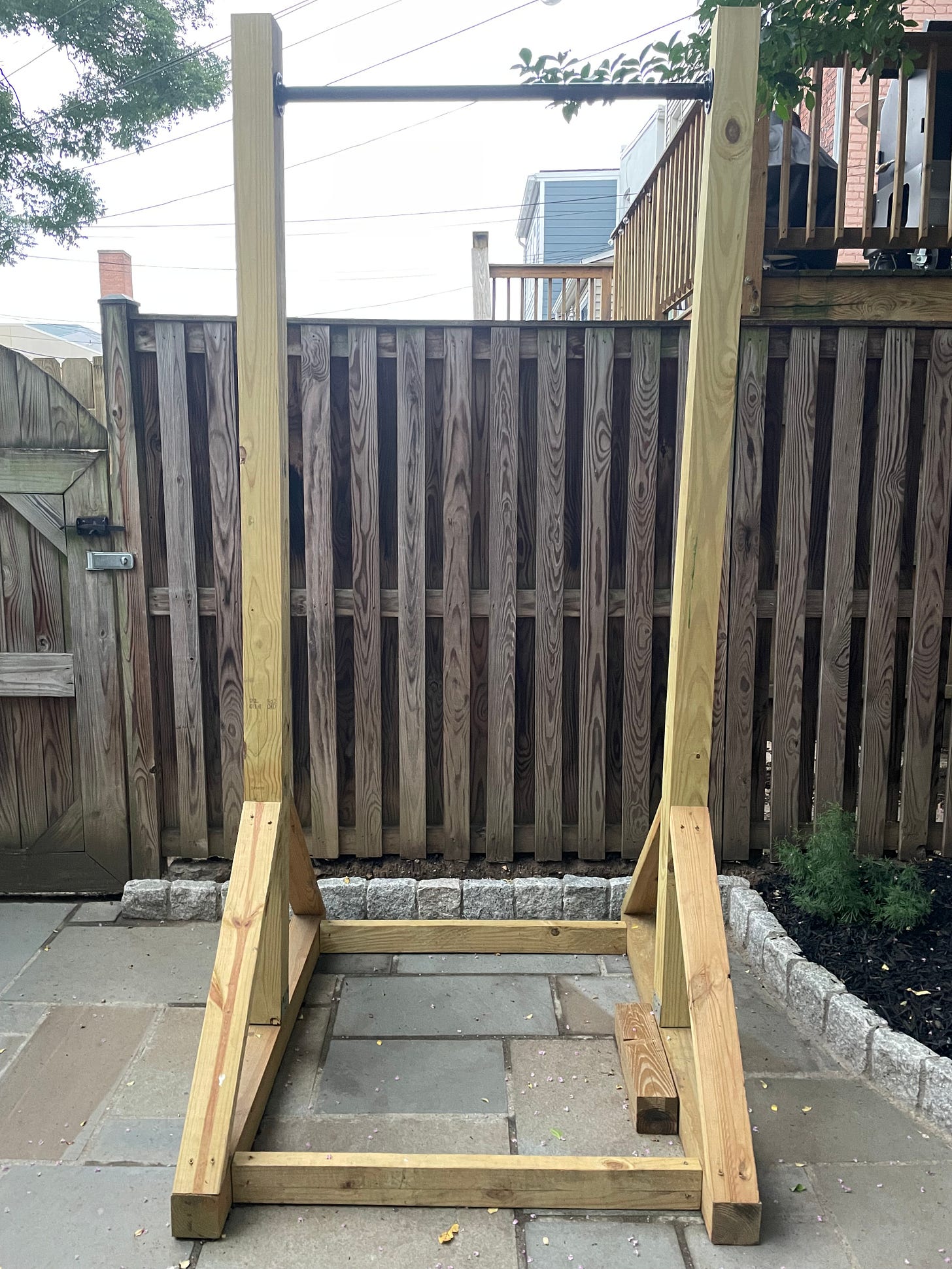DIY Wooden Pull-Up Bar: The Ultimate Backyard Fitness Project (No Concrete Needed!)
Skip the gym and build your own backyard fitness setup with this simple weekend project.
Back in March 2020, during the early days of the COVID-19 pandemic, the world came to a standstill. Gyms across the country closed their doors in an effort to slow the spread of the virus. For many of us, that left few options for staying active.
While living in the D.C. area, I found a silver lining just a short run away — a mile across the Key Bridge, down by the Potomac River on the western end of M Street in Georgetown. There, at the base of the iconic Exorcist Steps, stood a single, weathered pull-up bar. This spot became an outdoor gym for locals, who used the steps for cardio circuits and the bar for strength training.
The steps earned their nickname from the 1973 horror classic The Exorcist, which featured a now-famous scene where a priest tumbles down them to his death. Since then, the location has become a kind of urban fitness landmark. That simple pull-up bar kept me going through that first uncertain year of COVID.
Ever since grinding out pull-ups at the Exorcist Steps, I’ve dreamed of building a pull-up bar of my own — one that would always be there, no matter what.
Why Build a DIY Pull-Up Bar?
The biggest reason? Availability. No lines, no commuting, no excuses. Living through COVID made me appreciate the power of having a personal fitness setup just steps from my back door.
But there’s something deeper too. In a time when so much of our lives are digital, building something with your hands is incredibly satisfying. I’ll be the first to admit — I’m not the handiest person. But creating something tangible, functional, and durable feels good. It’s a way to reclaim a skill that many of us, especially office workers, are at risk of losing.
If you work a desk job like I do, you're probably indoors all day under fluorescent lights. Most modern workouts also happen inside gyms with blaring TVs and rows of machines. Training outdoors changes that. Pull-ups under the sky give you fresh air, natural light, and a break from screens.
Bonus: during backyard parties, the pull-up bar becomes a fun competition. The current record holder in my circle has hit 10 reps. I’m working hard to top that by the end of summer.
Why a Wooden, Self-Standing Design?
Last month, my father-in-law and I built a wooden, self-standing pull-up bar in under three hours. I chose this design for a few key reasons:
✅ Flexibility
It’s movable. I can rearrange the backyard or clear space for parties without tearing anything out or leaving permanent damage.
✅ No Damage to Property
There’s no drilling into brick, siding, or studs. No risk of cracking walls.
✅ No Digging Required
Most DIY pull-up bars involve concrete footings or digging deep holes. Mine requires neither — and if I move one day, there won’t be cement buried in my yard.
✅ Stability
Wooden self-standing designs don’t shake or wobble like some store-bought models. I previously owned a foldable metal pull-up bar, but it was too short (my feet would hit the ground) and would shift while in use. Setting it up and storing it every time was a hassle — and it took up valuable indoor space.
Materials & Cost
Here’s everything I used to build my pull-up bar:
1 x 36 in. Black Steel Pipe $30.31 (QTY 1)
1 in. Black Floor Flange $12.99 (QTY 1 - a pack of four; I used two)
4x4 - 8 ft. Treated Wood $12.48 (QTY 3)
2x4 - 8 ft. Treated Wood $5.38 (QTY 3)
9 x 3 1/8 in. Screws $17.91 (QTY 1)
1/4 in. x 2-1/4 in. Concrete Anchor Screws $8.81 (QTY 1)
Post Base for 4x4 $6.97 (QTY 2)
Total (with tax): $145.71
Design Notes
I loosely followed this YouTube video by T3m0ur — big thanks to him for creating a clear and solid tutorial. That said, I made a few modifications:
Bar Width: I used a 36-inch steel pipe instead of a 30-inch one to allow for wider grip pull-ups.
Base Design: I opted for a sturdier base using different metal supports than shown in the original video. His design required bending brackets, which I found less stable.
Height: My final build stands at 94 inches (7'10"), which is tall enough for me (and friends over 6 feet) to hang freely without feet hitting the ground. I used a miter saw like this one from DeWalt to cut 6 inches off the vertical 4x4s to hit that sweet spot.
In just a few hours, I built something that gets used almost daily — and something that I’m proud of. A personal gym setup that costs less than $150, fits in my backyard, and brings people together during parties? That’s a win.
Of course, none of it would’ve gone so smoothly without my father-in-law. His years of woodworking experience made the build not only possible but enjoyable. If you can, team up with someone who's handy — the project is much easier (and more fun) that way.
Thinking of building your own pull-up bar? Do it. You’ll be glad you did.
👉If you enjoyed this article, please remember to hit the “Like” button, and feel free to share!





